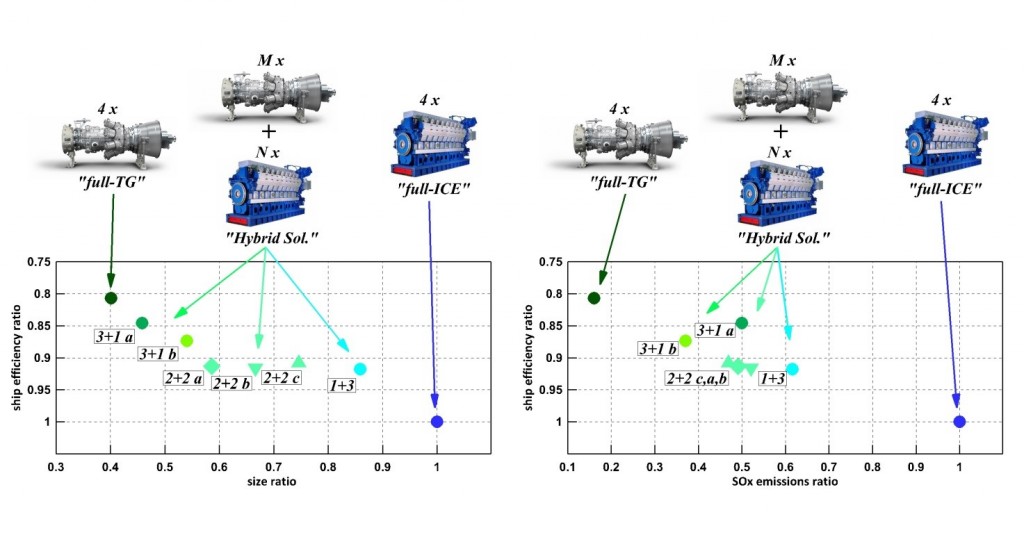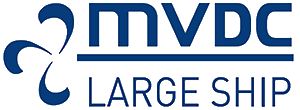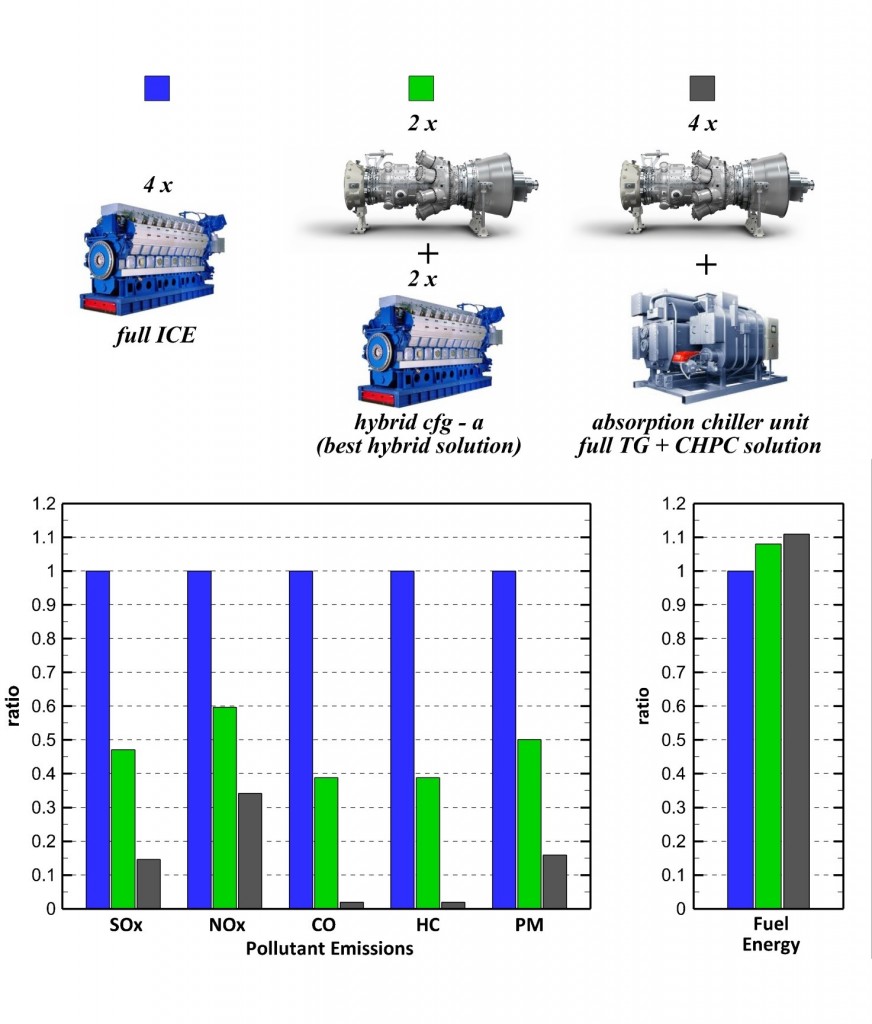Prime movers
The ability to use direct current on board large cruise ships ushers in new perspectives for the use of high-rotational-speed gas-turbine (GT) engines for energy generation. The advantages of the use of GT as an alternative to traditional internal combustion engines (ICE) include a reduction in the size and weight of prime movers, and the ability to function at high rotational speeds, leading to reduced size and weight for electrical generators as well.”
The study analyses the possibility of using gas turbine engines (GT) as an alternative to internal combustion engines (ICE) commonly installed onboard large ships with electric propulsion. Gas turbines are expected to provide a significant reduction in terms of size and weight, and can be more easily operated at high rotational speed. They are thus better suited to an MVDC electric system.
A numerical model to simulate the performances of GTs and ICEs operated at both fixed and variable rotational speeds was specifically developed.
Different solutions of the power generation system installed on a reference case study were analyzed. Compared to the standard configuration with ICEs only, the use of GTs produces a drastic reduction in the size and weight of the engines (-77% and -60% respectively) as well as pollutant emissions (more than halved), see Fig. 1. In spite of these advantages, there was found to be an increase of about 9% in fuel consumption, which must be carefully evaluated in view of the economical implications.
In order to look for better solutions, hybrid configurations (ICE+GT) with different power management strategies were also considered . A multi-objective optimization analysis was performed in order to obtain the best configuration for both energy and environmental aspects. The results show that the best hybrid solution can produce a remarkable reduction in both size (-41%) and pollutant emissions (about -50%) compared to the “full-ICE” configuration, and can guarantee fairly high efficiency levels (only 2-6 points lower than the maximum levels reached with the “full-ICE” case), see Fig. 1.

Fig.1. Multi-objective optimization: comparison between size, energy efficiency, and emissions of pollutants for different configurations of prime movers and different load management strategies. The values for the “full-ICE” configuration are used as reference values in the graph.
Finally, in order to guarantee an optimal use of the thermal energy available downstream of the GTs, CHPC solutions were also analyzed, i.e. trigeneration systems used for the combined production of heat, power and cooling. The results of this analysis show that the best solution is based on a “full-GT” configuration where the cooling load is produced with a combined system of absorption and compression chillers. The latter system is mainly used during port phases and rarely in navigation conditions. This configuration could be considered as the “optimal” solution if an overall improvement can be found for the energy and environmental aspects. Compared to the power generation system currently used on the tested ship (see Fig.2), the outcome of this trigeneration solution has been a remarkable reduction in pollutant emissions, which turned out to be comparable to the reduction obtained with the “full-GTs” case, with a marginal increase in fuel consumption (about +3.5-4%).
MVDC Large Ship – Sistema elettrico integrato con distribuzione in media tensione a corrente continua per grandi navi a propulsione elettrica, è un progetto cofinanziato dal POR FESR 2007-2013 Regione Friuli Venezia Giulia, Asse 1, Attività 1.1b.









